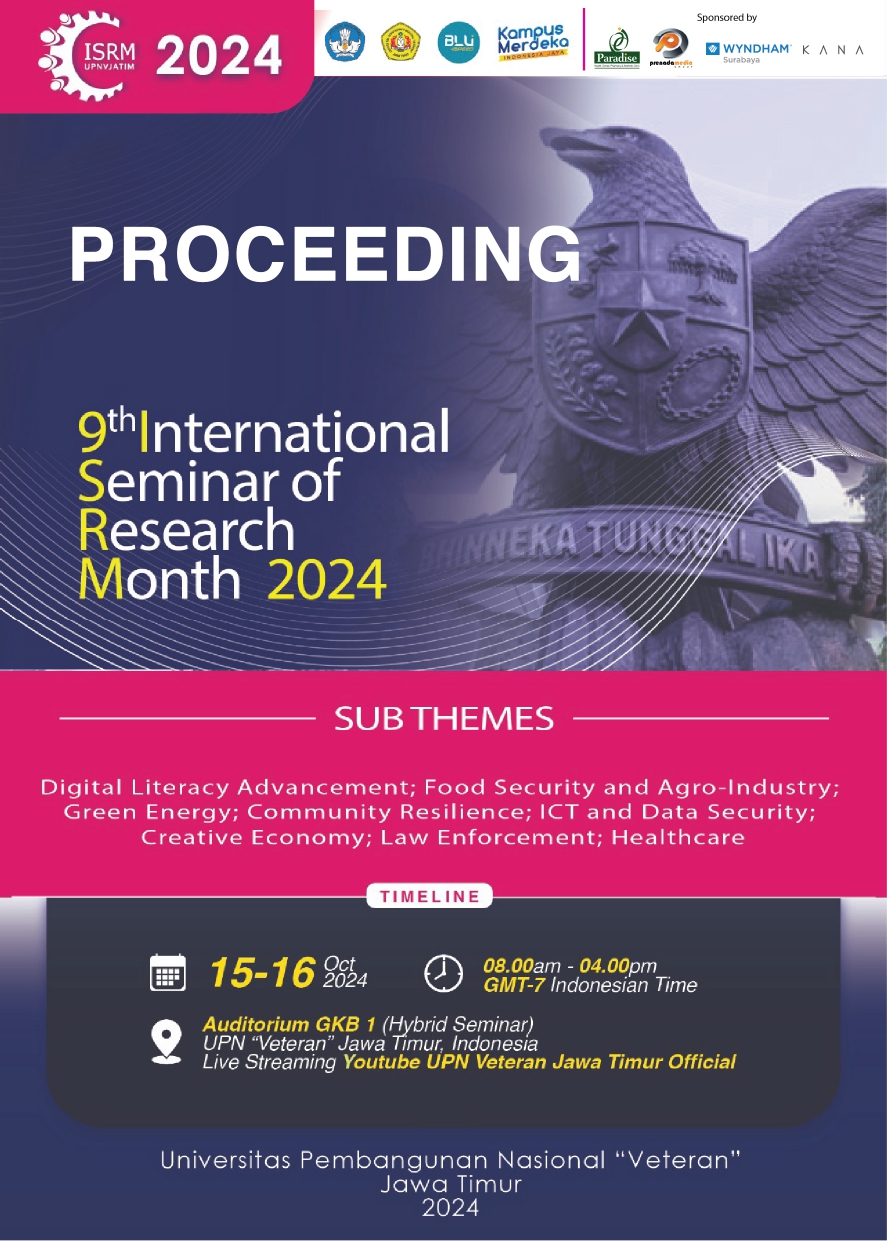Training on the Operation of Animal Manure Crusher and Mixer in Dewi Sri Farmer Group
DOI:
https://doi.org/10.11594/nstp.2025.4753Keywords:
Crusher, Mixer, Organic Fertilizer, SDG 9, SDG 12, SDG 15Abstract
The training and operation of the animal manure crusher and mixer at Dewi Sri Farmer Group aims to increase efficiency and productivity in processing the into organic fertilizer. This tool is designed to simplify the process of crushing and stirring animal manure mechanically, which has been done manually and takes considerable time and energy. The training program includes counseling on the benefits and use of the tool, demonstration of how to operate, and hands-on practice by farmers. With this training, it is expected that farmers can operate the equipment properly, maximize the benefits that can be obtained, and improve the quality and quantity of organic fertilizer production. The application of this technology is also expected to help Dewi Sri Farmer Group in managing the organic fertilizer supply chain more effectively and efficiently. This activity also supports the implementation of several SDGs including SDG 9 (industry, innovation, and infrastructure), SDG 12 (responsible consumption and production), and SDG 15 (land ecosystems).
Downloads
References
Aprilianti, N. W., Sutoyo, & Purwanti, E. W. (2020). Perception of farmers on the use of compost on rice farming in Harapan Farmer Groups, Pogalan Village, Pogalan Sub District, Trenggalek Regency. Journal of Social and Agricultural Economics, 13(1), 92–98.
Bhunia, S., Bhowmik, A., Mallick, R., & Mukherjee, J. (2021). Agronomic efficiency of animal-derived organic fertilizers and their effects on biology and fertility of soil : A review. Agronomy, 1–25.
Kurnia, H., Riandani, A. P., & Aprianto, T. (2023). Application of the total productive maintenance to increase the overall value of equipment effectiveness on ventilator machines. Jurnal Optimasi Sistem Industri, 1, 52–60. https://doi.org/10.25077/josi.v22.n1.p52-60.2023
Leman, A. M., Wahab, R. A., Zakaria, S., Feriyanto, D., & F, M. I. (2017). The development of mixer machine for organic animal feed production: Proposed Study. AIP Conference Proceedings, 1885(1), 020158. https://doi.org/10.1063/1.5002352
Lestari, W. D., Adyono, N., & Nisa, F. L. (2023). Peningkatan kapasitas produksi pupuk organik CV. Tiga Lima Jaya melalui Hilirisasi Teknologi Penghancur KOHE. E-DIMAS: Jurnal Pengabdian Kepada Masyarakat, 14(4), 809–815.
Mahato, N., Ansari, M. O., & Cho, M. H. (2015). Production of Utilizable Energy from Renewable Resources : Mechanism, Machinery and Effect on Environment. Advanced Materials Research, 1116, 1–32. https://doi.org/10.4028/www.scientific.net/AMR.1116.1
Mindarta, E. K., Wibowo, A. A., Bagus, A., & Rahma, N. (2018). Designing portable chopping plastic waste machine utilizing electric motor. MATEC Web of Conferences, 204, 04005.
Niu, Y., Zhang, J., Qi, J., Meng, H., Peng, H., & Li, J. (2023). Design and test of soil–fertilizer collision mixing and mulching device for manure deep application machine. Agriculture, 13(3), 709.
Downloads
Published
Conference Proceedings Volume
Section
License

This work is licensed under a Creative Commons Attribution 4.0 International License.
Authors who publish with this proceedings agree to the following terms:
Authors retain copyright and grant the Nusantara Science and Technology Proceedings right of first publication with the work simultaneously licensed under a Creative Commons Attribution License that allows others to share the work with an acknowledgement of the work's authorship and initial publication in this proceeding.
Authors are able to enter into separate, additional contractual arrangements for the non-exclusive distribution of the proceedings published version of the work (e.g., post it to an institutional repository or publish it in a book), with an acknowledgement of its initial publication in this proceeding.
Authors are permitted and encouraged to post their work online (e.g., in institutional repositories or on their website) prior to and during the submission process, as it can lead to productive exchanges, as well as earlier and greater citation of published work (See the Effect of Open Access).














